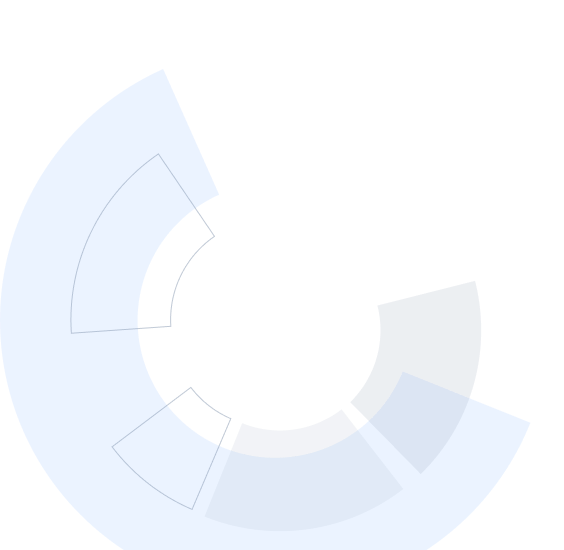What Is CSS?
October 24, 2024
Article



Create an interactive user experience.. Learn the fundamentals of full stack web development in five comprehensive courses.



Instructors: Prof Marco Gillies





71,340 already enrolled
Included with 
(3,860 reviews)
(3,860 reviews)
Modern full-stack web development
Reactive / multi-user web applications
APIs and animation
Collaborative multi-user experiences

Add to your LinkedIn profile



Add this credential to your LinkedIn profile, resume, or CV
Share it on social media and in your performance review

Responsive web design is all about creating the best user experience regardless of whether a user is accessing your site from a desktop computer, a mobile phone, or a tablet.
This Specialisation covers the basics of modern full stack web development, from UX design to front-end coding to custom databases. You’ll build foundational skills in a full range of technologies, including HTML/CSS, Javascript, and MongoDB, and you’ll learn to implement a reactive, multi-user web application using the meteor.js framework. We’ll also touch on more advanced topics, such as APIs, data visualization, and animation.
You will add several projects to your portfolio to demonstrate your skill and growth throughout this Specialisation. You will create web pages using basic elements to control layout and style, use responsive web design principles to take a site from wireframe to website, implement security features, and create collaborative multi-user experiences. Just like any professional full stack web developer, you will build accessibility and usability into your responsive websites.
Applied Learning Project
Upon completing the five courses in the Responsive Website Development and Design Specialization, along with the Capstone Project, you’ll have designed and launched your own fully-functioning, responsive web application.
In the capstone project, you will:
1. Develop a complete website using the full range of skills learned during the specialisation
2. Work through a structured process from idea generation to product delivery
3. Document and receive feedback on the development of your project from an idea to a fully functional piece of software in a series of structured assignments including peer interactions
In this course you will learn three key website programming and design languages: HTML, CSS and JavaScript. You will create a web page using basic elements to control layout and style. Additionally, your web page will support interactivity.
At the end of the course, you will be able to: 1. Define the purpose of HTML, CSS and JavaScript 2. Make a simple web page using HTML 3. Use CSS to control text styles and layout 4. Use CSS libraries such as Bootstrap to create responsive layouts 5. Use JavaScript variables and functions 6. Manipulate web page content using JavaScript 7. Respond to user input using JavaScript In this course, you will complete: 2 assignments writing HTML, CSS and JavaScript, each taking ~1 hour to complete 4 quizzes, each taking ~20 minutes to complete 1 programming exercise~30 minutes to complete multiple practice quizzes, each taking ~5 minutes to complete Participation in or completion of this online course will not confer academic credit for University of London programmes.
In this course you will learn how to apply concepts from interaction design and human computer interaction in order to design and build an interactive, professional looking website. You will learn how to make your web page designs adapt to different screen sizes using responsive grid layouts. You will learn how to add navigation and other design elements, and you will learn how to separate data and display using JavaScript objects and templates.
At the end of the course, you will be able to: 1. Explain why users need to know where they are, where they can go and what is on a web page 2. Create wireframe mockups of web pages 3. Identify the key functional elements of web pages 4. Use Bootstrap components to realise page designs 5. Use JavaScript data structures such as arrays and objects to define the data used in a web page 6. Use the Handlebars template library to convert data to HTML 7. Add interactivity to templates using JavaScript event listeners In this course, you will complete: 1 website design assignment taking ~1 hour to complete 1 programming assignment taking ~1 hour to complete 4 quizzes, each taking ~20 minutes to complete multiple practice quizzes, each taking ~5 minutes to complete Participation in or completion of this online course will not confer academic credit for University of London programmes.
In this course, you will learn how to create a complete, multi-user web site using the Meteor.js framework and MongoDB. You will implement user authentication, security features, reactive templates and routing using iron router. You will carry out key database operations such as inserting, removing and updating data as well as sorting and filtering. You will see how a complete application can be built, line by line.
At the end of the course, you will be able to: 1. Install the Meteor.js system and create a web application 2. Work with the Meteor.js packaging system 3. Write Meteor.js templates that can reactively display data 4. Use insert, remove and update operations on MongoDB 5. Write MongoDB data filters to search for and sort data 6 .Add user authentication functionality to a website 7. Control what is displayed on the page using iron:router 8. Implement basic security features In this course, you will complete: 1 server install assignment taking ~1 hour to complete 1 programming assignment taking ~8 hours to complete 4 quizzes, each taking ~20 minutes to complete multiple practice quizzes, each taking ~5 minutes to complete Prerequisites This course is designed to build on top of the material delivered in the previous two courses in this specialisation. Therefore, we recommend that if you find this course too technically challenging that you first complete the previous courses before re-commencing this one. Specifically, we expect you to be able to code basic HTML, CSS and Javascript before you take this course. Participation in or completion of this online course will not confer academic credit for University of London programmes.
In this course, you will develop more advanced web application programming skills. You will learn how to control data read and write access using methods, publish and subscribe. You will learn how to access your database and server shells using command line tools. You will use the SimpleSchema system to validate data and generate input forms automatically. You will see a complete collaborative code editing environment, TextCircle, being built from scratch.
At the end of this course, you will be able to: - use Meteor methods to control data write access - use publish and subscribe to control data read access - install and use advanced Meteor packages - add user accounts to your applications - implement complex MongoDB filters - use the MongoDB and meteor server shells - define data validations schemas using SimpleSchema - generate data input forms automatically using SimpleSchema In this course, you will complete: 2 programming assignments taking ~4 hours each to complete 4 quizzes, each taking ~20 minutes to complete multiple practice quizzes, each taking ~5 minutes to complete Participation in or completion of this online course will not confer academic credit for University of London programmes
In this course, we will show you exciting examples of collaborative, interactive web applications that use various types of media including sound, images and big data.
We will show you how to build sites that provide precisely this functionality, using Meteor. We will also provide fully working example application code that you can use for your own commercial web projects. The course also provides a range of advice and suggestions about how to develop bespoke web applications which match the requirements of clients, where clients are people who commission the product or people who use the product. We will take you through the development of the following applications: 1. A portfolio website with collaborative blogging functionality. 2. An interactive, realtime, multi user music remixing system. 3. An interactive, online graffiti wall where users can collaborate to create graphics. 4. An interactive data visualisation platform for exploring and plotting big data in exciting ways. At the end of this course, you will be able to: • Implement animated data visualisations and graphics using advanced user interface libraries such as vis.js • Work with external data sources • Create multi user, realtime, collaborative environments • Use media APIs such as the Web Audio API Participation in or completion of this online course will not confer academic credit for University of London programmes.
For your Responsive Website Development and Design Specialization Capstone Project, you will create a complete, responsive, multi-user, data-driven website which aims to solve a particular problem. We encourage you to create a website addressing a problem that you are interested in! However, if you don’t have an idea of your own, we have several that we will suggest in the course.
In the capstone project, you will: 1. Develop a complete website using the full range of skills learned during the specialisation 2. Work through a structured process from idea generation to product delivery 3. Document and receive feedback on the development of your project from an idea to a fully functional piece of software in a series of structured assignments including peer interactions Participation in or completion of this online course will not confer academic credit for University of London programmes.










The University of London is a federal University which includes 17 world leading Colleges. With extensive experience in distance learning since 1858, University of London has enriched the lives of thousands of students, delivering high quality degrees across the globe. Today, University of London is a global leader in flexible study, offering degree programmes to over 45,000 students in over 190 countries, delivering world-leading research across the world. To find out more about University of London, visit www.london.ac.uk


Championing research-rich degrees that provoke thought, stretch the imagination and tap into tomorrow’s world, at Goldsmiths we’re asking the questions that matter now in subjects as diverse as the arts and humanities, social sciences, cultural studies, computing, and entrepreneurial business and management. We are a community defined by its people: innovative in spirit, analytical in approach and open to all.






Unlimited access to 10,000+ world-class courses, hands-on projects, and job-ready certificate programs - all included in your subscription
Earn a degree from world-class universities - 100% online
Upskill your employees to excel in the digital economy
Time to completion can vary based on your schedule, but most learners are able to complete the Specialization in 6-8 months.
Each course in the Specialization is offered on a regular schedule, with sessions starting about once per month. If you don't complete a course on the first try, you can easily transfer to the next session, and your completed work and grades will carry over.
We recommend taking the courses in the order presented, as each subsequent course will build on material from previous courses.
Coursera courses and certificates don't carry university credit, though some universities may choose to accept Specialization Certificates for credit. Check with your institution to learn more.
You’ll be able to build, test, and deploy a complete, mobile-ready web application from the bottom up using industry standard technologies (primarily HTML, CSS, and Javascript/JQuery). You’ll also have a fully-functioning, responsive web application to add to your portfolio.
This course is aimed at beginners who have not done any programming before but you are expected to have a decent level of general ICT skills. If you have programmed before, perhaps in an area other than the web, the course contains information of interest to those at intermediate and advanced levels.
You will need access to a reasonably recent computer with reliable internet access, including having the system access rights to install software. You will need the Chrome web browser or Firefox if you prefer. You will need a decent text editor such as notepad++, sublime text, textwrangler, emacs, vim etc.
This course is completely online, so there’s no need to show up to a classroom in person. You can access your lectures, readings and assignments anytime and anywhere via the web or your mobile device.
If you subscribed, you get a 7-day free trial during which you can cancel at no penalty. After that, we don’t give refunds, but you can cancel your subscription at any time. See our full refund policy.
Yes! To get started, click the course card that interests you and enroll. You can enroll and complete the course to earn a shareable certificate, or you can audit it to view the course materials for free. When you subscribe to a course that is part of a Specialization, you’re automatically subscribed to the full Specialization. Visit your learner dashboard to track your progress.
Yes. In select learning programs, you can apply for financial aid or a scholarship if you can’t afford the enrollment fee. If fin aid or scholarship is available for your learning program selection, you’ll find a link to apply on the description page.
When you enroll in the course, you get access to all of the courses in the Specialization, and you earn a certificate when you complete the work. If you only want to read and view the course content, you can audit the course for free. If you cannot afford the fee, you can apply for financial aid.
This Specialization doesn't carry university credit, but some universities may choose to accept Specialization Certificates for credit. Check with your institution to learn more.